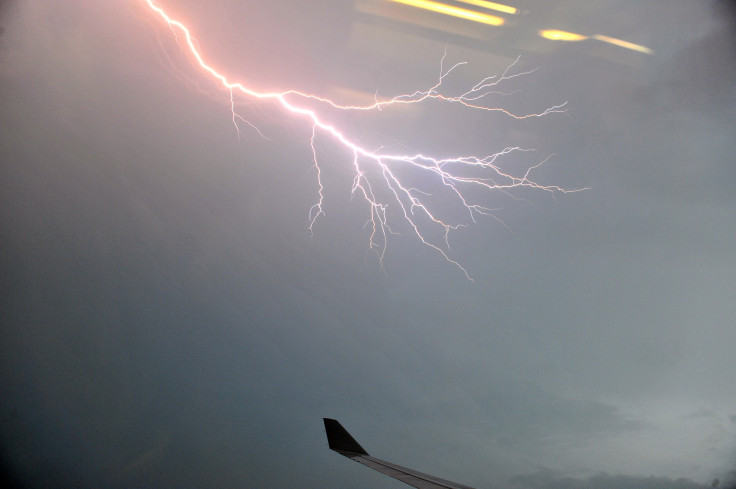Lightning Strikes American Airlines Flight After Takeoff From Miami

An American Airlines flight to Seattle was forced to return to Miami International Airport on Friday after the plane was struck by lightning, according to reports. Several other flights were reportedly grounded the same evening as a result of inclement weather.
“The flight landed safely, we swapped to a new aircraft, and the flight re-departed,” the airline told International Business Times in a brief statement Tuesday. American Airlines added that aircraft are engineered to be resistant to lightning strikes.
Marc Henderson, a spokesperson for Miami International Airport, told ABC-affiliate WPLG no passengers were hurt during the incident. According to the news outlet, “Miami-Dade Fire Rescue was prepared for a hazardous situation, but Henderson said they were only there as a precaution.”
According to Boeing’s website, lightning strikes to aircraft are relatively common. While damage to planes is rare, Boeing notes that “the result can range from no damage to serious damage that requires extensive repairs that can take the airplane out of service for an extended period of time.”
“The frequency of lightning strikes that an airplane experiences is affected by several factors, including the geographic area where the airplane operates and how often the airplane passes through takeoff and landing altitudes, which is where lightning activity is most prevalent,” the website noted.
In terms of frequently, the Scientific American reported in 2001 that each craft in the United States commercial fleet is hit by lightning more than one a year without any significant incident. The report went on to note that the last confirmed incident in which a plane crashed after being struck by lightning occurred in 1967, when a lightning bolt struck an aircraft and caused a fuel tank explosion.
But modern flyers needed worry, experts say.
“Airplanes have been designed for years to deal with lightning strikes pretty well,” William Voss, the president and CEO of the Flight Safety Foundation, told CNN in 2010. “Since the 1930s, it's been clearly understood that aircraft will be subjected to lightning strikes, so they're sort of designed to take it.”
Voss added: “[T]hey do it by basically making sure there's a conductive path so that the lightning runs around the skin of the aircraft. It is dissipated out safely through points that have static wicks [antenna-like devices on wingtips] and so on, things that help the electricity flow around the aircraft and back out to the atmosphere.”
© Copyright IBTimes 2024. All rights reserved.





















